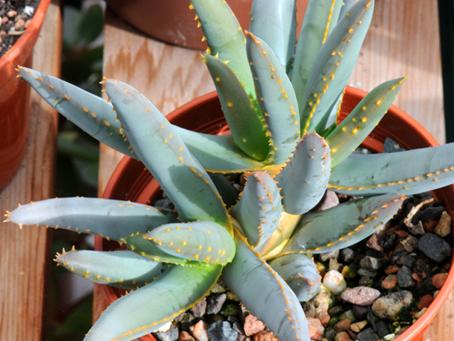
The Maiden Quiver Tree/Aloe ramosissima
When it comes to endangered species trees are often
overlooked yet the play a major role in the ecosystem. The Green Promise Initiative has recognised the need of putting
trees at the core of the conservation process. In their EcoSchools they have
included fauna and flora to the conversation.
The Maiden Quiver tree is one of the trees that are
considered to be Vulnerable on the IUCN Red list of
endangered species. What makes it special is the plant is endemic to
the Richtersveld at the border between South Africa and Namibia. The trees
forms many branches from the ground level and branching continues as the plant
becomes older, resulting in a dense, almost spherical shrub up to 2 m high and
wide. The leaf colour is glaucous-green
or yellowish green, often with a pinkish tinge. The margins have narrow edges
with brownish teeth. The flowers appear from June to August.
When it blossoms, it produces beautiful bright yellow flowers
which produce nectar harvested by sugarbirds and ants. When capsules dry out,
the winged seeds are carried by the wind, often landing in bushes where they
germinate, making full use of the shelter and shade. Plants eventually outgrow
the nurse plant, killing it in the process. The fleshy leaves and stems act as
water reservoirs in times of drought and the grey powder on the stems reflect
intense heat away from the plant
The Maiden Quiver tree grows on desert slopes and in ravines
and plant is bushy and short in appearance. It is listed as. Although it has no
cultural or medicinal use the tree is threatened due to mining and overgrazing.
The Maiden Quiver is known for its very young flower buds which can be eaten as
they taste like asparagus.
Everything in the ecosystem matters because it has a purpose
and any short supply of caused more harm than good. Bees, ants and Birds are dependent on a tree
like The Maiden Quiver so if we do not preserve it the chain of the command in
the ecosystem.
Join us in the spirit of conservation by donating or
planting a tree of your own.

